
Go With the Flow
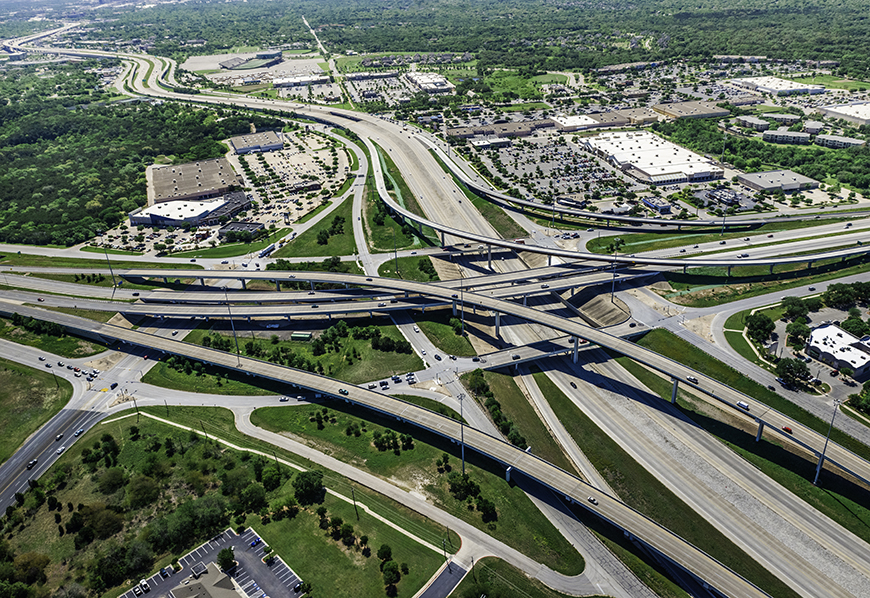
Commuting patterns between counties tell much about an area’s economic growth, including which towns will see the most growth, and in which direction that growth will occur. |
Driven by population growth, small “bedroom communities" in a major metropolitan area occasionally become larger cities with economies that spread beyond their city limits and even across county borders. Sometimes their economies merge with those of neighboring municipalities.
The commuting patterns between counties that make up a metropolitan area help illustrate this phenomenon. Take the Austin-Round Rock Metropolitan Statistical Area (MSA), for example. The Texas Real Estate Research Center recently explored commuting patterns for Travis County and its neighboring counties to better understand the relationship between the regions that make up Greater Austin.

Tracking Commuting Patterns
The U.S. Census Bureau estimates commuting flows between counties as part of its regular surveys. For the Austin-Round Rock MSA, the Census Bureau estimates the flows between Bastrop, Caldwell, Hays, Williamson, and Travis Counties. Datasets used in this report are from the 1990 and 2000 decennial censuses and the 2011-15 five-year American Community Survey (ACS).
All five counties have seen growth in both employed residents and employment across the periods covered by the data (see table). Travis County, the region’s center and home to most of the City of Austin, has seen the largest absolute growth, increasing from 349,005 to 677,322 workers who also live in the metropolitan area.

More than a quarter of the residents from each of the outlying counties commute into Travis County for work. Of all the counties, Williamson County has seen the fastest rate of growth, increasing its proportion of total metropolitan area workers from 8 percent in 1990 to 17 percent in 2011-15. The trends are similar in terms of residential location for metropolitan area workers. The proportion of metropolitan area workers who live in Williamson County increased from 16 percent in 1990 to 24 percent in 2011-15. Figures 1 and 2 show the shifts in employment and residential location toward Williamson County. The main relative shift is away from Travis County and toward Williamson County. While Travis County continues to grow in both employment and residents, Williamson County is growing at a faster rate.
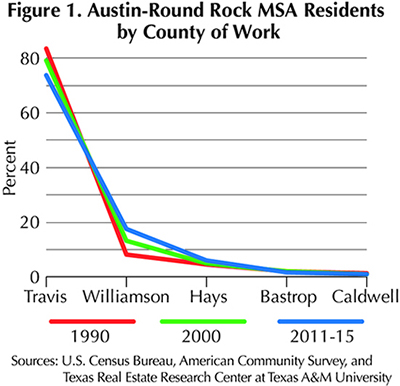
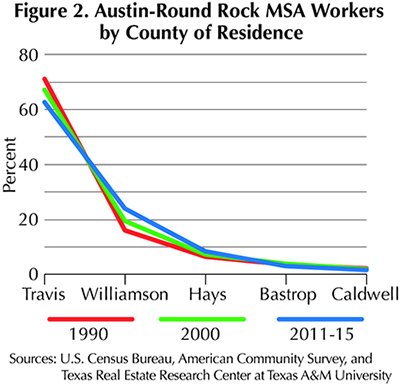
Most Travis County residents continue to work in Travis County (Figure 3), but that proportion fell from approximately 97 percent in 1990 to an average of less than 92 percent in the 2011-15 ACS (Figure 4). An increasing but still small proportion of Travis County residents works in Williamson County (almost 7 percent) and Hays County (just above 1 percent) (Figure 3). Meanwhile, Bastrop and Caldwell Counties continue to receive only a miniscule number of reverse commuters from Travis County.


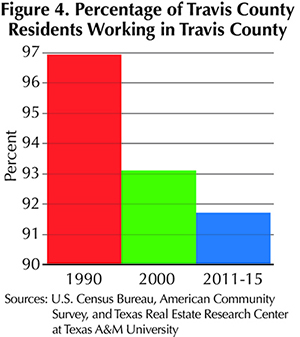
Williamson County residents show strong ties only to their own county and to Travis County (Figure 5). As the developed part of the region has moved northward, a growing number of Williamson County residents have found jobs in their own county. Now a larger percentage of them work in Williamson County than in Travis County.

Hays and Bastrop Counties also exhibit strong commuting relationships only with Travis County (Figures 6 and 7). Caldwell County, on the other hand, has decent commuting ties to both Travis and Hays Counties (Figure 8).

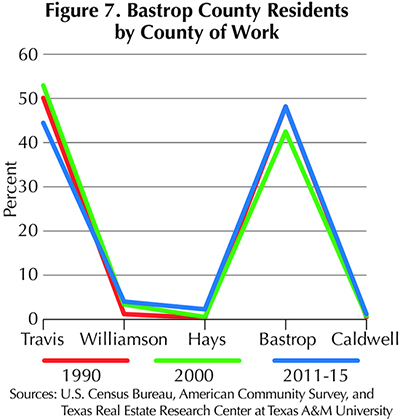
Austin’s Influence Moves Northward
The central City of Austin and its surrounding areas continue to grow, with growth largely concentrated to the north toward Williamson County. This means more urban-style development and jobs for Williamson County, which means many of its cities are no longer strictly bedroom communities of Austin-Round Rock.
The developed fringe of the central Austin region has only recently expanded beyond the Hays County line along the southern corridor of I-35. It has yet to reach Bastrop or Caldwell Counties, so residents there are likely still focusing on independent local job opportunities and commuting into Travis County.
The strong relationship between Caldwell and Hays Counties is likely due to the I-35 retail corridor and Texas State University, which is just inside Hays’ border.
As the Austin-Round Rock MSA region continues to grow, so should population and employment opportunities in the counties that make up the region. The ties between the counties should strengthen as well.
____________________
Dr. Perdue ([email protected]) is a research
economist and Neathery a research intern with the Texas Real Estate Research Center at Texas A&M University.

You might also like

Publications
Receive our economic and housing reports and newsletters for free.






